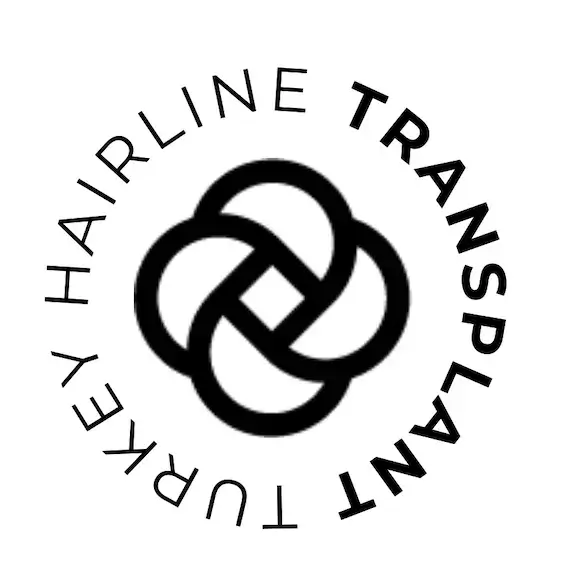HBOT Treatment: A Comprehensive Guide to Hyperbaric Oxygen Therapy
- Written by Janna Strong
- Published,
- Last updated, March 12, 2025
HBOT Treatment involves breathing pure oxygen in a pressurized chamber. Originally used to treat decompression sickness in divers, HBOT Treatment is now widely applied in various medical fields, from wound healing to neurological recovery.
My name is Emma Wright, your resident hair restoration specialist. Today, we’ll be looking at a comprehensive guide to Hyperbaric Oxygen Therapy.
Understanding how HBOT Treatment works, who can benefit from it, and what to expect can help individuals make informed decisions about their health.
What Is HBOT Treatment?
HBOT Treatment requires a patient to enter a hyperbaric chamber where the air pressure is increased up to three times higher than normal atmospheric pressure.
This process allows the lungs to take in more oxygen than they normally would, helping oxygen-rich blood circulate efficiently and promoting healing.
HBOT Treatment is used for a wide range of conditions, from chronic wounds and infections to traumatic brain injuries and carbon monoxide poisoning. The increased oxygen levels enhance the body’s natural healing processes, reduce inflammation, and help regenerate damaged tissues.
How HBOT Treatment Works
- Increases oxygen supply to areas with poor circulation
- Reduces inflammation and swelling, accelerating recovery
- Boosts the immune system by enhancing white blood cell function
- Stimulates the growth of new blood vessels in damaged tissues
- Enhances collagen production, improving wound healing

Who Can Benefit from HBOT Treatment?
- Chronic Non-Healing Wounds. Individuals suffering from diabetic foot ulcers, radiation burns, or pressure sores may benefit from HBOT Treatment since it improves blood flow and increases oxygen levels, allowing stubborn wounds to heal.
- Carbon Monoxide Poisoning. HBOT Treatment helps flush out carbon monoxide from the bloodstream and restores normal oxygen levels, preventing long-term complications.
- Decompression Sickness (The Bends). Divers who ascend too quickly may develop nitrogen bubbles in their blood. HBOT Treatment eliminates these bubbles and reduces symptoms.
- Severe Infections. Necrotizing infections and gangrene may respond well to HBOT Treatment, as oxygen boosts the immune response and kills anaerobic bacteria.
- Traumatic Brain Injury and Stroke Recovery. HBOT Treatment is being explored for its role in repairing brain damage by increasing oxygen supply to injured brain tissue, aiding stroke and brain injury recovery.
- Radiation-Induced Tissue Damage. People who have undergone radiation therapy for cancer may experience delayed radiation injuries, and HBOT Treatment helps regenerate affected tissue.
- Autism Spectrum Disorder (ASD). Some practitioners claim HBOT Treatment improves cognitive function and reduces inflammation in children with autism, though more research is needed.
- Sports Injuries and Recovery. Many athletes use HBOT Treatment to speed up muscle recovery, heal injuries, and reduce inflammation after intense training.
What to Expect During HBOT Treatment
a. Preparing for the Session
- Avoid smoking or alcohol before treatment, as they reduce oxygen absorption
- Wear 100% cotton clothing to prevent static-related risks
- Remove metallic objects, lotions, or cosmetics
- Eat a light meal before the session to prevent low blood sugar
b. Entering the Hyperbaric Chamber
- Patients either sit or lie inside a monoplace chamber (for one person) or a multiplace chamber (for multiple people)
- The chamber is then pressurized with 100% oxygen or pressurized air
- Ear pressure changes, similar to those experienced when flying in an airplane, may occur
c. The Treatment Process
- A typical HBOT Treatment session lasts between 60 to 90 minutes
- Patients can breathe normally and may read, listen to music, or watch TV
- Some individuals experience warmth, mild discomfort, or slight drowsiness
d. Post-Treatment
- Most people resume normal activities immediately after HBOT Treatment
- Some may feel tired or lightheaded, but these effects are usually temporary
How Many HBOT Treatment Sessions Are Needed?
- Chronic wounds may require 20 to 40 sessions
- Brain injuries and strokes often need 40 or more sessions
- Carbon monoxide poisoning usually resolves in 1 to 3 sessions
- Decompression sickness treatment varies based on severity
Each HBOT Treatment session builds upon the previous one, so consistency is essential for effective results.
Risks and Side Effects of HBOT Treatment
While HBOT Treatment is considered safe and non-invasive, it is important to be aware of potential risks and side effects. Most individuals tolerate the therapy well, but some may experience mild discomfort or temporary symptoms due to the increased pressure and oxygen exposure during sessions.
a. Ear Barotrauma
- The increased pressure inside the chamber can lead to ear pain, fullness, or mild hearing issues, similar to the feeling experienced during an airplane ascent or deep-sea diving.
- Some individuals may experience temporary eardrum stress or mild barotrauma, which can usually be relieved by swallowing, yawning, or using the Valsalva maneuver (pinching the nose and blowing gently to equalize pressure).
- Severe cases may require a pressure equalization tube for those prone to ear issues.
b. Oxygen Toxicity
- While rare, excessive oxygen exposure can lead to oxygen toxicity, which may cause seizures, confusion, nausea, or lung irritation in extreme cases.
- To minimize risks, sessions are carefully monitored by medical professionals to control oxygen levels and exposure duration.
- Patients with a history of epilepsy, lung disease, or respiratory conditions should be screened before HBOT Treatment.
c. Temporary Vision Changes
- Some individuals experience temporary nearsightedness (myopia) due to changes in the eye’s lens caused by repeated exposure to high-pressure oxygen.
- This effect usually resolves within a few weeks after completing treatment, but individuals with existing vision conditions should discuss concerns with their doctor.
d. Lung Collapse (Rare – Pneumothorax)
- Patients with pre-existing lung conditions, such as chronic obstructive pulmonary disease (COPD) or previous lung injuries, may be at higher risk for lung collapse (pneumothorax) due to pressure-induced expansion of trapped air in the lungs.
- A thorough medical evaluation is required before undergoing HBOT Treatment for individuals with lung-related issues.
e. Fatigue and Lightheadedness
- Some patients report feeling fatigued or lightheaded immediately after a session, which usually resolves within a few hours.
- This is generally due to oxygen saturation fluctuations and blood circulation adjustments.
f. Increased Blood Sugar Fluctuations
- Individuals with diabetes may experience temporary changes in blood sugar levels, requiring close monitoring before and after treatment.
g. Claustrophobia and Anxiety
- Some people may feel claustrophobic inside the monoplace hyperbaric chamber, leading to anxiety or discomfort during sessions.
- Practicing relaxation techniques, breathing exercises, or opting for multi-place chambers can help ease claustrophobic concerns.
Although most side effects are mild and temporary, patients with pre-existing conditions should consult with their healthcare provider to determine if HBOT Treatment is a safe option for them.
Where to Get HBOT Treatment
HBOT Treatment is available in hospitals, specialized clinics, and wellness centers that focus on oxygen therapy and wound care. The choice of facility is critical in ensuring safety, effectiveness, and proper medical oversight.
When selecting a clinic for HBOT Treatment, consider the following factors:
- Accreditation and Certification. Ensure the facility is certified by the Undersea and Hyperbaric Medical Society (UHMS) or other recognized regulatory bodies to guarantee adherence to safety protocols and best practices.
- Qualified Medical Supervision. Sessions should be monitored by trained medical professionals, such as physicians, respiratory therapists, or certified hyperbaric technicians, to ensure proper oxygen administration and handle any complications.
- FDA-Approved Hyperbaric Chambers. Verify that the facility uses FDA-approved chambers for medical-grade treatment. Some centers may offer mild hyperbaric oxygen therapy (mHBOT), which operates at lower pressures and may not provide the same medical benefits as full-pressure HBOT Treatment.
Type of Hyperbaric Chamber
There are two main types of hyperbaric chambers:
- Monoplace chambers are designed for single-patient use, where the individual breathes oxygen in an enclosed acrylic tube.
- Multiplace chambers allow multiple patients to receive treatment simultaneously while wearing oxygen masks or hoods.
Clinics offering multiplace chambers are often more equipped for emergency treatments, such as decompression sickness or carbon monoxide poisoning.
- Treatment Cost and Insurance Coverage. Some hospitals and specialized centers accept insurance for FDA-approved conditions such as chronic wounds and carbon monoxide poisoning, while others require out-of-pocket payments for off-label treatments like autism therapy or athletic recovery. Always check with your insurance provider about coverage options.
- Facility Reputation and Reviews. Reading patient testimonials and reviews can provide insight into the quality of care, professionalism, and overall experience at a particular HBOT Treatment center.
Choosing the right HBOT Treatment provider ensures safe and effective therapy, maximizing the benefits of hyperbaric oxygen for healing, recovery, and wellness.
Conclusion
HBOT Treatment offers a scientifically backed approach to healing by enhancing oxygen delivery to tissues, reducing inflammation, and promoting faster recovery.
While not a miracle cure, HBOT Treatment has proven effective for treating a variety of conditions, including wounds, brain injuries, and decompression sickness.
For those considering HBOT Treatment, consulting a medical professional is essential to determine whether it is the right option for their specific needs. With growing interest in its potential benefits, HBOT Treatment remains a promising therapy worth exploring.

